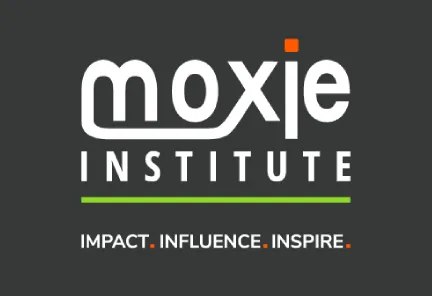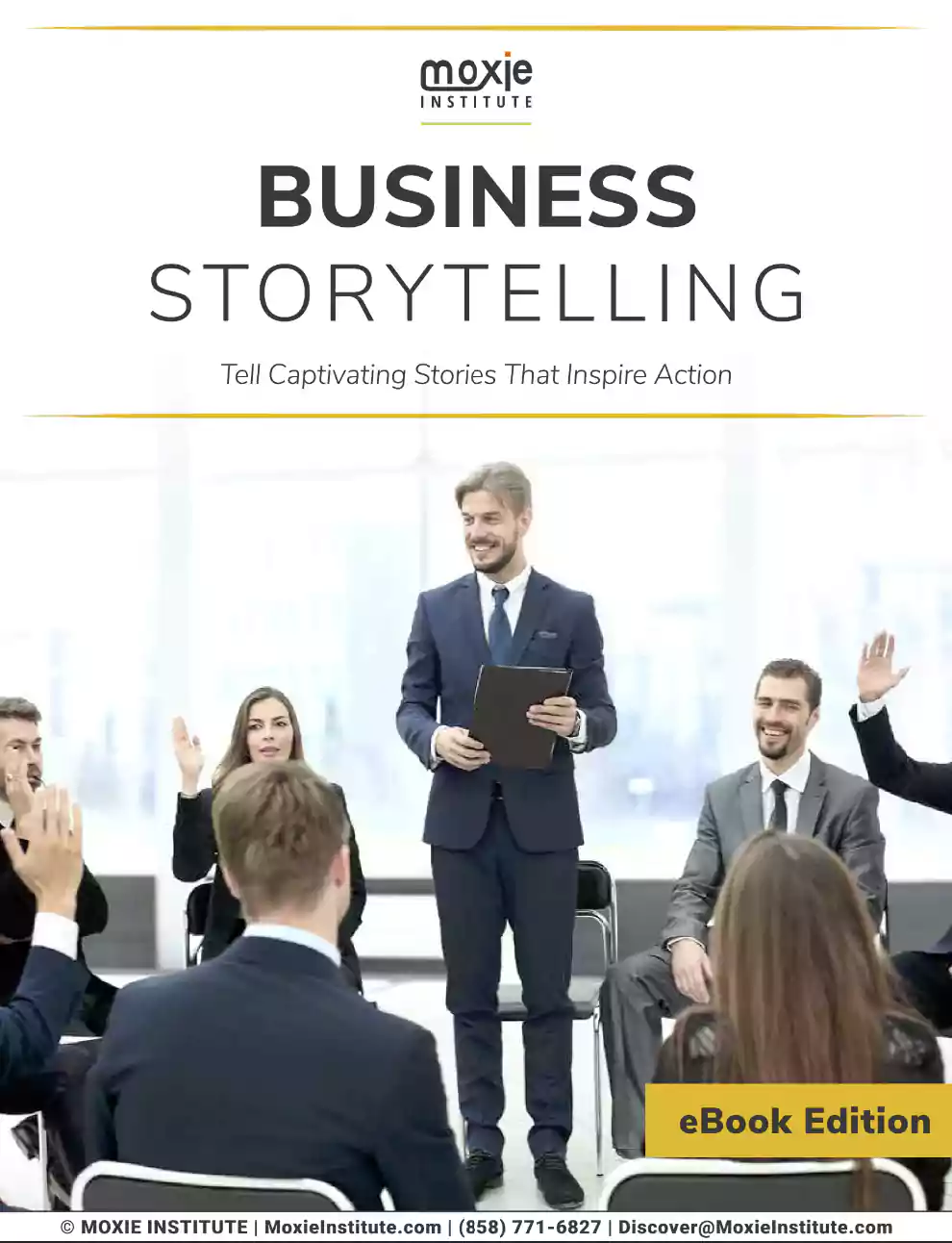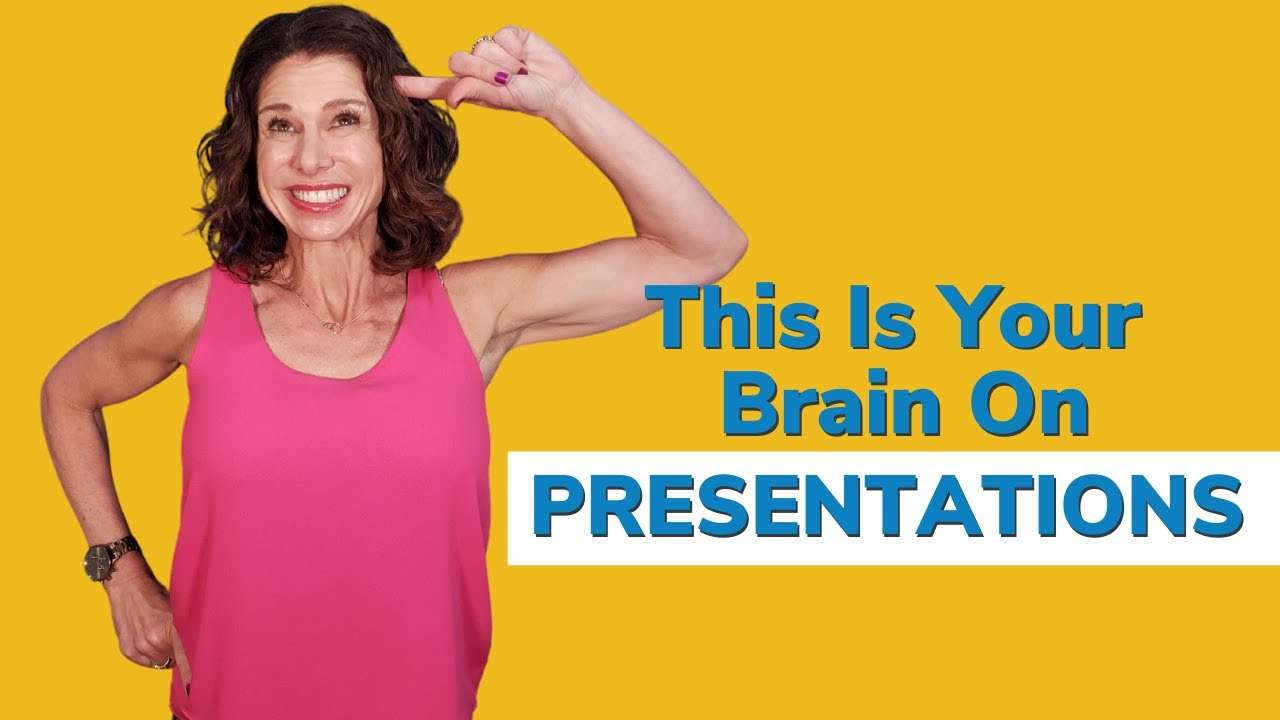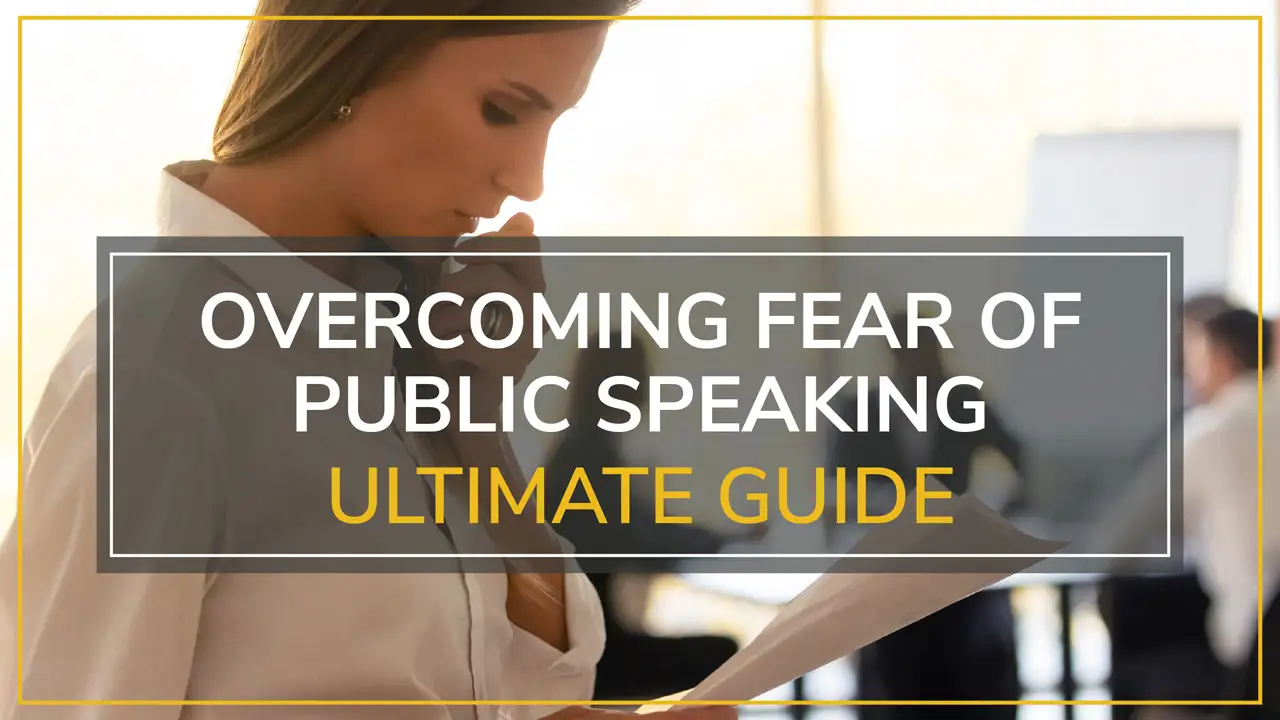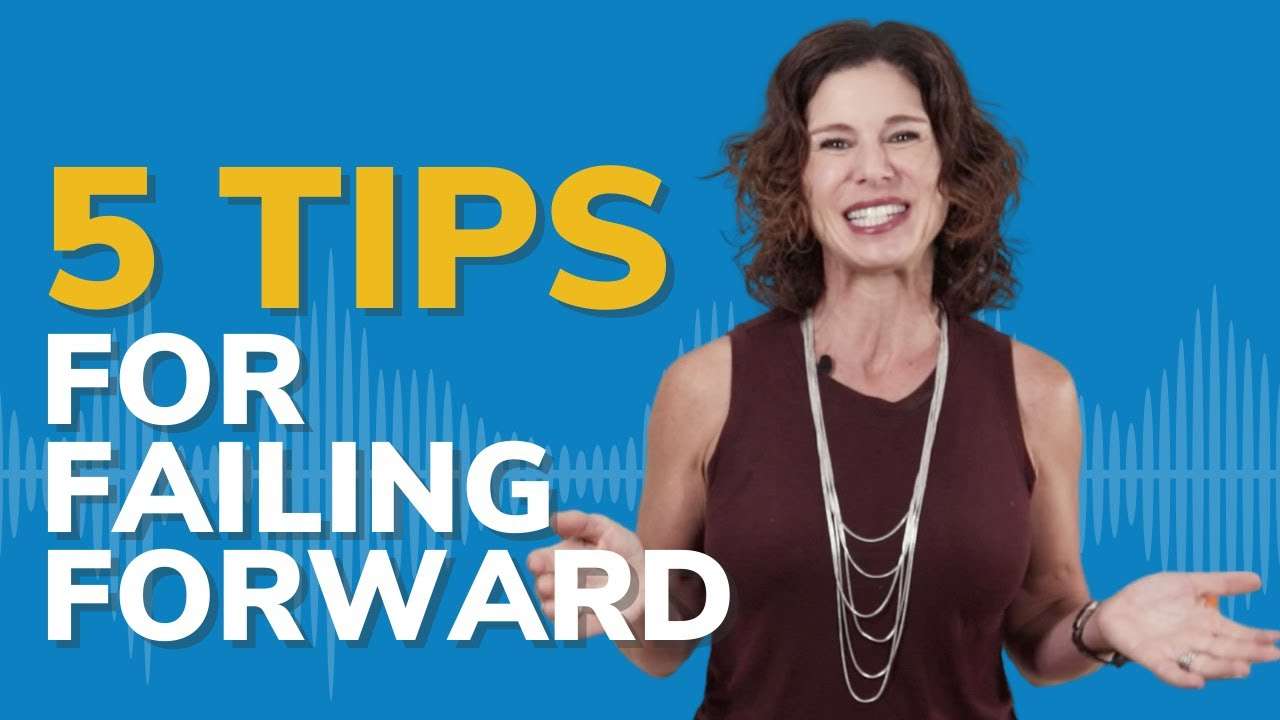Anyone who knows Moxie knows that Moxie lives in the crossroad between performing arts, adult learning theory, and neuroscience. We have made the bridge between the performing arts and presentation skills every time we do a video but what we haven’t done is talk about neuroscience.
I love neuroscience because it really explains why what we feel happens and why the techniques we use work. So stay tuned and we are going to talk about your brain on presentations.
are you guys ready for this are 10 times more powerful than positive thoughts in our brain and saying something aloud is 4 to 6 times more positive than saying it in our head. What does this mean?
This means if you are saying negative things to yourself in your head or out loud, you are 40 to 60 times more likely for those things to happen, you are literally wiring your brain for negativity.
Table of Contents
ToggleThe Neuroscience Of Public Speaking And Presentation
Hi everyone, I’m Fia Fasbinder welcome to Moxie Talk where we help you find your voice, share your message, and lead with confidence. If there’s anything that I geek out on and love so much is neuroscience and I try to infuse it in every single workshop I give, every single coaching client I have, and every single video I do. However, we don’t talk about it a lot more often than not we talk about my background in the performing arts and how that bridges to what we do in public speaking. Today we’re going to talk everything about brain science from the way you craft your content and the stories you tell and the engagement you do to how you practice and to how you deliver your content — all things presentation skills and neuroscience. – – –We Are Hardwired For Stories
I’m going to start this video by talking about stories or this is your brain on stories. We are hardwired to remember stories. You’ve probably heard me say that before but what does this really mean? What does it mean we’re hardwired to tell stories?What it means is we have been telling stories around campfires since our cavemen and women days. Here’s the thing you might not know when you tell a story, your audience’s brain releases dopamine andDopamine
dopamine is actually the hormone that is responsible for memory so it’s like a mental sticky note. This is why we’re hardwired to remember stories. This is why when somebody tells a story we remember it more than any other part of their presentation because you are helping your audience to remember it by letting them secrete the hormone that is responsible for memory. So there’s some neuroscience for you about why you should tell stories.Dopamine = Memory
Here’s another one, there is a famous study by a man named William Glasser who is a psychologist it’s actually called surprisingly an off the Glasser Study. In this study, he talks about memory retention for certain experiences. If we just hear something we remember a little, if we just see something we remember a little bit more, if we see and hear it we remember a little bit more but if we experience some emotion around it we remember this information up to 80 percent.Glasser Study
Stories can do this because of that dopamine release so next time you want to make sure your audience remembers something about your presentation wrap it around a story. I love the Brene Brown quote thatEmotion improves retention by up to 80 %
Give us that data but give us that data with a story to chase it to make sure we fire off all that dopamine in our brains.Stories are data with a soul.
The Theory Of Primacy And Recency
The next thing to remember about your presentations is the theory of primacy and recency. This means that- We remember most
- What we experience first and
- What we experienced last
Why Audience Engagement Is Important
Let’s move on to this is your brain on audience engagement. We’ve talked about stories, now let’s talk about audience engagement and why it’s important in your presentations. In order to do that, I’m going to talk about one of my favorite thought leaders in neuroscience who is John Medina. He wrote a bestseller called Brain Rules and he runs the Seattle Brain Institute.Now my friend John Medina did this amazing study where he hooked an audience up to electrocardiogram machines. Then he had a speaker lecture at the front of the room and what he found was for every 10 minutes of this speaker lecturing, the audience’s heart rate went down. Why is this? This is because we are hardwired to retain information when we are moving or doing something. According to John Medina, this is because, in our hunter-gatherer days, all the information, all the input we took in was while we were moving, hunting, looking out for things, communicating. So we are not creatures that are meant to take in information while we are being still. The audience engagement is what John Medina callsBrain Rules – John Medina
I just call it audience engagement. It’s important to do if you don’t want those audiences’ brains to tune out and you don’t want their heart rates to take a nosedive. So how often should you do this?Emotionally Competent Stimulus
This is where you might want to sit down. Every 10 minutes if it is an in-person presentationIn Person – 10 Minutes
and here it goes guys every four minutes if it’s a virtual presentation. You need something to make sure that the audiences heart rate isn’t going down, that you’re not just lecturing at them and this could be aVirtual – 4 Minutes
- Video
- Quote
- Activity
- Question
- Group Discussion
The Neuroscience Of Practice
We’re moving on to your brain on practice. I love the concept of deliberate practice not just because I was an actor and I know the importance of practice but for something we call Hebb’s Law.What does that really mean? That means — that every time you practice, you are building neural superhighways in your brain. Your neural pathways literally get thicker and bigger every time you practice something. Here’s what I compare it to. Have you ever been late to go somewhere and google maps takes you this way you’ve never been before and you get even more nervous because you don’t know that way? This is the equivalent of giving a presentation in your brain that you have not practiced. Now compare that to going home from work on the same route you travel every day — you know the stop signs, you know the lights, you know where the turns are, you know the traffic patterns. it is tried and true and not stressful. That is the equivalent in your brain literally when you practice — you are building superhighways inside your brain. Therefore, if there’s no other reason to practice, if there’s no other reason to believe the practice makes perfect, it is to literally build bigger neural pathways in your brain. You want them to be superhighways by the time you get up to present.Hebb’s Law: Neurons that fire together, wire together.
There is a caveat to that however your brain craves safety. What do I mean by this? What I mean is back in our cavemen days, there were a lot of dangerous things going on. There were things, animals eating us, things attacking us, life was dangerous and so our brain in order to protect us from dangerous situations— liked us to do the same things over and over, liked routine like to keep us in a safe space to make sure we survived. Why am I telling you this? What I mean by your brain crave safety is, if you try to practice everything at once because you are taking to heart my Hebbs Law, if you try to start a new habit all at once and you try to go from A-to-Z in one fell swoop, you are going to put your brain in fight or flight. Your brain is going to say — Uh oh! I don’t feel safe, this feels unfamiliar and dangerous and I’m going to shut down. Here are some of the ways it shuts down you procrastinate, you decide that this isn’t for you and you start to catastrophize, you find all sorts of reasons not to practice because you’ve bit off too much at once. Your brain is going into threat reaction mode and it is sending messages that this is too dangerous So keep in mind two things with practice – keep in mind Hebb’s Law and also keep in mind the idea that you need to do baby steps or iterative steps to accomplish this big goal so that your brain does not go into threat reaction. – – –Your Brain Craves Safety
The Negativity Bias
Speaking of threat reaction, I want to talk about negativity bias. This also goes back and most of the stuff goes back to our very early days on this planet.Negativity bias is the idea that we are hardwired to remember negative events. Back in our caveman and cavewoman days, if there was a rustling in the bush it was a good idea for us to think — Huh! that some could be something dangerous, it could be a tiger, I better avoid. This it wouldn’t be a good idea for us to say — oh! it’s probably a tiger, I’ll just deep breathe and think positive things. So our brains developed to hold on to negative experiences. Some scientists will say negative experiences are like Velcro in our brains and positive experiences are like Teflon. We don’t hang on to that. How does this play out with presenting? How does this play out with you trying things that are new and allowing yourself to fail forward? Well if you only focus on the negative, Oh! I bombed that or I didn’t do as good as I can or that one person didn’t like my message or this person was giving me stink eye. If you focus only on the negative because you’re hardwired to do that you will never be able to make the progress that you need to make. You have to give yourself permission and grace to fail forward, to take the baby steps. Now that you know about the negativity bias it’s really important that when you hear those voices in your head, I call those the Naysaying voices, that you recognize that this is your brain’s way of protecting you. It is an ancient reaction we call the negativity bias.We are hardwired to remember negative events
You are going to make a conscious effort to focus on positive give yourself permission to fail forward and take one step after another. negative thoughts are definitely more powerful. Now talking of negative thoughts there is a recent study that says negative thoughtsPractice requires patience and compassion with yourself
You are hanging on to these negative thoughts and you are building those superhighways and they’re not the right superhighways. These are the superhighways with potholes and danger and accidents — do not hang on to those negative thoughts. It is so important that you re-wire your brain. You can do this you can literally build new synapses in your brain by every time you catch yourself starting to think of something negative around your presentation you switch it to something positive. It does not have to be something cheesy or kumbaya, it shouldn’t be something that even you wouldn’t believe, it shouldn’t be something unicorns and rainbows. Make it real for yourself.A negative mindset = negative outcomes
I’ll give you an example, instead of saying something like Ugh! I’m just dreading this presentation tune into I am excited to contribute something that matters to this group, I am looking forward to teaching this group a new solution, I am looking forward to sharing my perspective in this presentation. If you can do this for yourself, you will build new neural pathways and new synapses, you will literally rewire your brain. – – –Ensure your positive self-talk feels natural
How Fear Affects your Brain
Moving on to one of my favorite subjects this is your brain on fear. First thing to know is that your brain is actually pretty dumb in the fact that in 2 million years it hasn’t figured out the difference between fear of giving a speech and fear of being attacked by a saber-toothed tiger. It literally just knows fear. When it senses some kind of threat reaction whether this is a threat of bombing a presentation or a threat of being attacked by a tiger, your brain signals your fight or flight mechanism to release itself. This is a really strange thing because our neocortex which is our newer part of our brain is much less stubborn than our lizard brain or our amygdala and fight or flight lives in this lizard brain. It’s what has kept us alive for millions of years and giving a speech is a much newer concept to our brain than being attacked by something and staying alive. So there are many occasions where fight or flight wins over giving a presentation and you’ve probably up to this part blamed yourself and thought god why do I get so nervous and made yourself really feel bad about this. It is important to know that fear of public speaking is a full-bodied automatic hormonal response to what your brain considers to be a threat. Once your body goes into fight or flight, it oftentimes derails our presentation. I’m telling you about the neuroscience behind this so that you can be kinder to yourself. It is really like that well-meaning friend or well-meaning relative that’s all jacked up on red bull that is trying to protect you by giving you bad advice. Everybody has someone like that in their life. That is your brain on fear it is trying to protect you from something that is not really a threat. Giving a presentation isn’t going to kill you but your brain thinks it might so it is trying to protect you. It is a modern-day threat that your brain really doesn’t need to release this fight or flight mechanism. So it’s important to really be able to talk to this fear. If you’re interested in learning more about how to overcome fear public speaking, read our blog series on it. We’ve got a lot of great videos on fear of public speaking but I will just give you this tip. Talk to that well-meaning overprotective friend that is your fear tell it something like — Hey fear, I see you’re back! Thank you so much for saving me from drowning in that pool or going into that dark alley but I am just giving a presentation today and I’ve got this. So you can sit in the back of the theater and watch if you’d like but you cannot sit in the front row, you cannot turn the lights off on me, you cannot be my coach from the wings you just have to observe. Really talk to your fear it helps I have so many clients that just understanding the neuroscience behind why their body does this, is really helpful.Changing Your Mindset With Breathwork
What is the antidote for your brain on fear? If there’s anything I love more than neuroscience of fear, it is breathwork. breathing! breathing! breathing! breathing!. I’m not going to go into how to breathe in this blog because I have other blogs on it but I want to tell you the neuroscience behind breath work because it is fascinating. When you learn to incorporate your diaphragm, you literally become an alchemist to your own body chemistry. You can literally take your body out of fight or flight and switch it to rest and digest. It’s like having a shift stick where you can shift your body manually from sympathetic nervous system reaction to parasympathetic nervous reaction how do you do that? You do it simply enough by breathing because we have this really cool nerve in our body — You can tell, I geek out on this stuff that I think the nerve is cool but I do! We have this really cool nerve in our body called ourVagal nerve means wanderer in greek and it is attached from our brain, our amygdala actually our brain stem to our abdomen. It wanders our bodies for signs of fight or flight or rest and digest. If you start to breathe shallow and rapid like we all do when we get stressed, your vagal nerve goes — Huh! there’s a problem, here there must be a threat. I am going to signal the fight-or-flight reaction. However, if you manually shift your breathing to deep diaphragmatic slow breaths, your vagal nerve goes — Oh! I guess we might be cool here. I’m gonna signal the parasympathetic nervous system and I’m going to release all those feel-good hormones like serotonin and dopamine and everything will be okay. Learning how to breathe to switch your brain chemistry is everything. If I can recommend one thing in this blog, if only one thing, read the blog on breathing so that you can learn how to change your brain chemistry for the better. So you can give confident presentations, you don’t feel like fear is this tidal wave that takes you over and you’re powerless until it washes away. You can become your own chemist to your brain chemistry. – – –Vagal Nerve
Using Neuroscience To Improve Your Presentations
I want to end with a little bit about how to present using brain science a couple things, first of all when you smile at your audience and you make eye contact with your audience their brains release the following hormones- Serotonin
- Dopamine
- Oxytocin
This doesn’t mean that you have to stand up comedy but it does mean that simply by taking joy in your own presentation, you help your audience take joy. The other reason you connect with your audience with eye contact and smile is what we callIf they’re laughing, they’re listening.
Mirror neurons are responsible for our survival as babies because we mirror the behavior of our mothers and fathers. If they look upset we feel upset, if they smile we smile. There is study after study that shows that when parents make facial expressions babies mirror them. It is no different with your audience. If you smile and take joy and passion in your presentation they will too, if you appear bored or lackadaisical or overly nervous they will too. I hope that this blog helped you understand the brain science behind presentations. Everything from why you should use stories to why you should prepare for your presentation, for to why you should learn to breathe, and last but not least why you should present with joy and passion. If you liked this blog make sure to subscribe to our newsletter and share it with your friends tell them about our YouTube channel. Hopefully, they’ll subscribe too and like us too. For more information on everything from soup to nuts presentations, make sure you check out moxieinstitute.com where you learn about all of our great classes including fear of public speaking speak with moxie all infused with performing arts and neuroscience. Check out our other blogs and videos about everything from how you come up with an idea for your presentation all the way to when you’re about to go on stage—it’s all there. Can’t wait to see you at the next one.Mirror Neurons.
